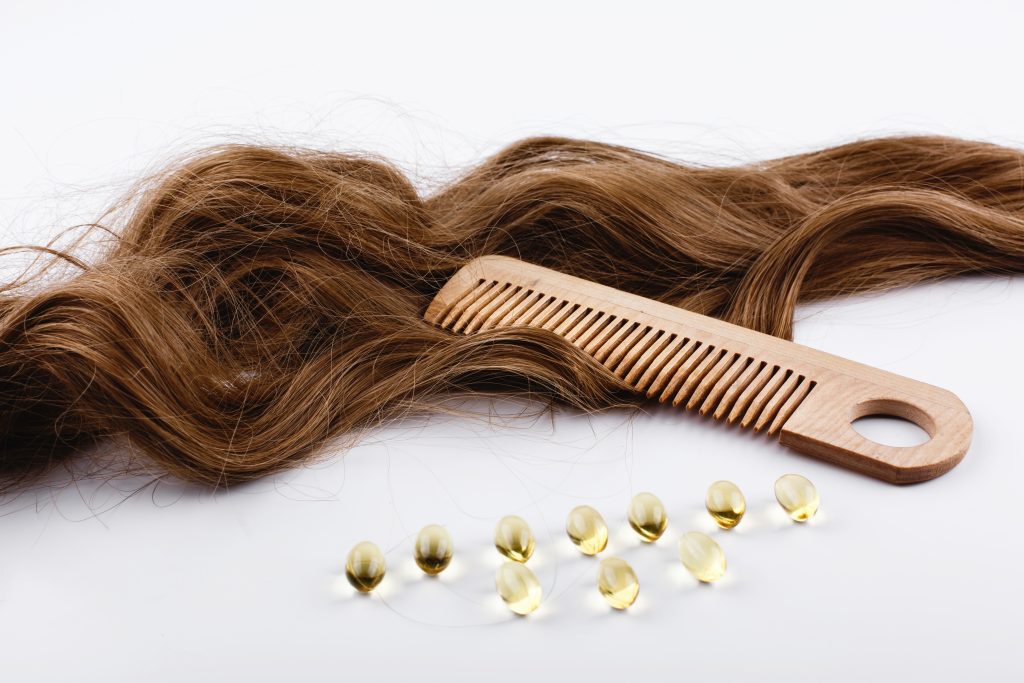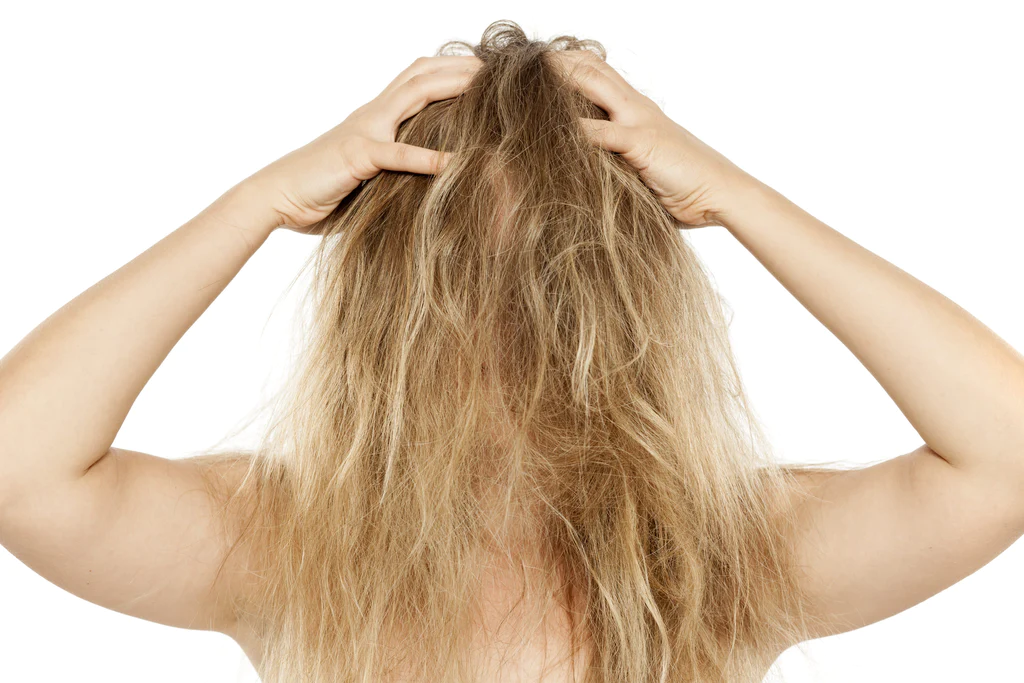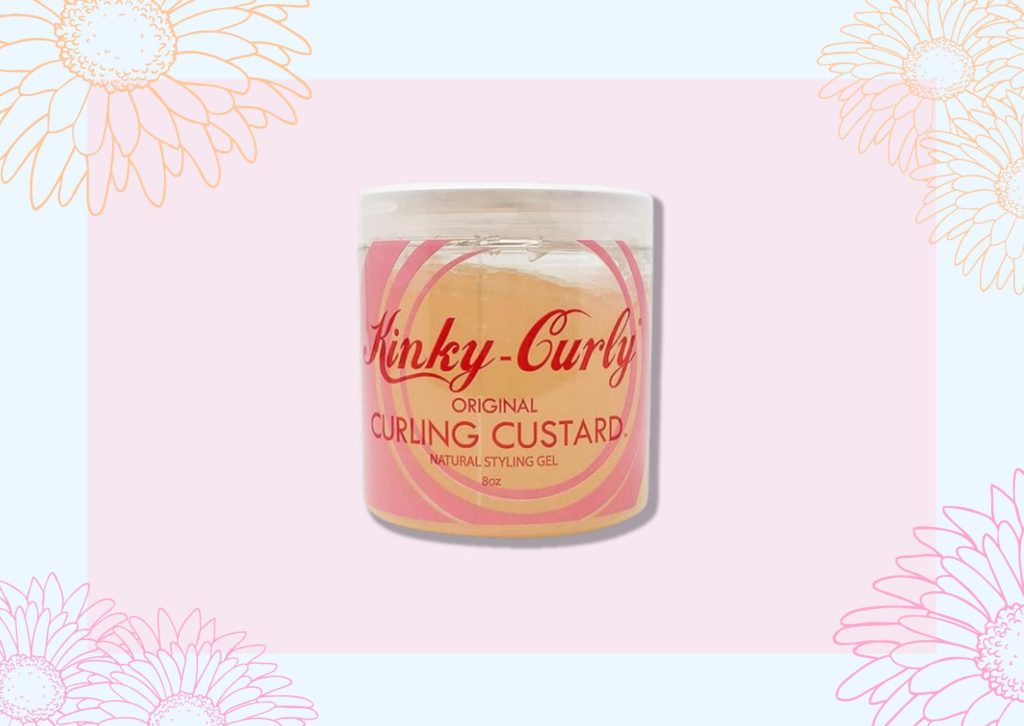Wavy hair can be both a blessing and a curse am I right?
With its natural, beachy look, it often appears effortless and stylish (if you are lucky). However, like all hair types, wavy hair comes with its own set of challenges. If you’re experiencing common wavy hair problems, you’re not alone. In this article, we’ll explore some of the most frequent issues faced by those with wavy hair and offer helpful advice on how to solve them.

From dryness and frizz to tangles and lack of definition, wavy hair can be prone to a variety of issues. But don’t worry – there are ways to tackle these problems and unleash your hair’s full potential. Understanding your hair’s unique needs and learning the right techniques and products to improve its health and appearance is key, and I’m here to help guide you through the process.
Understanding Wavy Hair
Wavy hair is a versatile hair type that embraces various lengths and textures. It’s somewhere between straight and curly hair types, characterized by its unique S-shaped pattern. Your wavy hair can come in different degrees, from subtle tussles to defined waves, which allows for a lot of diversity when it comes to styling and care.
Knowing your specific wavy hair type is essential for taking proper care of your locks. Generally, wavy hair can be classified into three types: type 2A, 2B, and 2C. Type 2A has a slight bend, with strands mostly appearing straight. Type 2B showcases more defined S-shaped waves, while type 2C consists of even more prominent waves that can get a little frizzy.
Wavy hair has a unique texture, as the hair strands are typically oval-shaped. This elliptical pattern creates the natural waves that you see, making your hair type distinct from those with straight or curly hair. This texture, however, can also make your hair prone to knotting, frizz, and damage.
Due to its shape and texture, wavy hair can benefit from tailored solutions that cater to its specific needs. For instance, choosing a shampoo and conditioner specifically formulated for wavy hair can help repair and hydrate your hair, maintaining its smooth and bouncy appearance. Remember not to overwash your hair, as doing so can strip it of its natural oils, leading to dryness and frizz. As a general rule, washing your hair once or twice a week should suffice.
When styling your wavy hair, be gentle with your locks and avoid aggressive combing or brushing. Instead, use a wide-tooth comb to detangle and preserve your natural wave pattern. Products designed to enhance wavy hair, like creams and gels, can be applied through a technique called scrunching. It involves gently lifting and squeezing your hair towards your scalp, promoting defined and soft waves.
By understanding the unique features of your wavy hair and incorporating hair care practices tailored to its specific needs, you can maintain the health and appearance of your waves, showcasing your hair’s natural beauty.

Common Wavy Hair Problems
Dry and Frizzy Hair
Wavy hair types can often experience dry and frizzy hair due to the uneven distribution of natural oils from the scalp. The first step to combating this issue is to make sure you’re using a quality shampoo and conditioner specifically designed for wavy hair. You can also incorporate a weekly deep moisturizing treatment to help add extra hydration to your hair. Additionally, avoid using excessive heat styling tools, as they can strip your hair of moisture and increase frizz.
Split Ends and Hair Loss
Split ends and hair loss can affect anyone, but they can be especially problematic for those with wavy hair. Split ends can occur due to excessive use of heat styling tools, over-washing, and lack of proper hair care. Hair loss can be attributed to factors such as stress, hormonal imbalances, and thyroid issues. Ensure that your hair gets adequate protein and nutrients to maintain strong hair follicles. Regular trims can help prevent split ends, while addressing underlying causes of hair loss may require medical consultation or lifestyle changes.
Scalp Issues
Having wavy hair makes you prone to scalp issues, such as dandruff, or oily or dry scalp. Dandruff is usually caused by dry scalp, excess sebum, or sensitivity to certain products. In order to combat scalp issues, try using a gentle shampoo and conditioner that cater to wavy hair. Keep a check on the sebaceous glands to regulate oil production on the scalp. Consult a dermatologist if scalp issues persist, and they can recommend the best course of action.
Flatness
Wavy hair can sometimes appear flat or lack volume, especially if it’s weighed down by heavy styling products or improper hair care. To add volume and bounce to your wavy hair, incorporate a lightweight styling mousse into your routine. This will help maintain the structure of your waves while adding silky smooth volume. Try experimenting with different styling techniques, such as diffusing or scrunching, to add more lift and definition to your waves.
Product Build-Up
Using the wrong products or using them excessively can lead to product build-up on your wavy hair. This can make your hair appear greasy, weighed down, and lifeless. The first step to address this problem is to cleanse your hair with a clarifying shampoo to remove product residue. Avoid using excessive amounts of heavy products, as they can weigh your hair down and make it appear flat. If your area has hard water, consider installing a water softening system or using a chelating shampoo to minimize mineral build-up on your hair.
Remember, maintaining wavy hair requires a good balance of proper hair care and suitable hair products. Keep these common problems and solutions in mind to achieve healthy, beautiful wavy hair.

Hair Care Tips for Wavy Hair
Proper Washing and Conditioning Techniques
To maintain your wavy hair, it’s essential to use the right washing and conditioning techniques. Generally, you should wash your hair once or twice a week to prevent overwashing, which can strip your hair of its natural oils and cause dryness and frizz. Choose a shampoo and conditioner specifically designed for wavy hair. When conditioning, focus on the ends of your hair to prevent weighing down the roots. Lastly, rinse your hair with lukewarm or cool water to seal the cuticle and retain moisture.
Balancing Moisture and Protein
Wavy hair needs a balance between moisture and protein to stay healthy and frizz-free. Ensure your hair gets adequate hydration by incorporating a leave-in conditioner or hair mask into your routine. On the other hand, protein treatments strengthen the hair structure and can prevent breakage. Look for products containing lactic acid or keratin for protein restoration. Remember, it’s essential to find the right balance, as too much protein can make your hair brittle, while excessive moisture can cause it to lose its shape.
Heat Protection and Styling Advices
Heat styling tools, such as blow-dryers, curling wands, and straighteners, can damage your wavy hair if not used correctly. To minimize damage, always use a heat protectant spray before styling, and opt for a lower temperature setting.
Additionally, try to limit the use of these tools and embrace your natural wave pattern whenever possible. If you must use heat to style your hair, avoid using hairspray or styling mousse, as these products can cause buildup and weigh down your waves.
Choosing the Right Hair Products
The right hair products can make all the difference in managing your wavy hair. For example, lightweight oils like coconut oil can help lock in moisture without causing heaviness. On the flip side, avoid heavy, silicone-based products, as they can weigh down your waves and make them look greasy. Look for products that specifically target wavy hair, and always do a patch test to see how your hair reacts to new products.
By following these hair care tips for wavy hair, you will not only prevent common problems but also enjoy stunning, healthy waves that turn heads.
Footnotes

You Need A Healthy Lifestyle for Healthy Hair
The Role of Diet
A well-balanced diet plays a crucial role in maintaining healthy hair. Consuming a poor diet may not provide the necessary nutrients, leading to hair issues. Make sure you include essential vitamins, such as vitamin B5, and minerals in your diet. Incorporating probiotics can also help promote a healthier scalp.
In addition to vitamins, don’t forget about the importance of omega-3 fatty acids for improving your hair’s texture and reducing inflammation. Some great sources of omega-3s are fish, nuts, and seeds.
Managing Stress and Hormonal Imbalances
Stress can negatively impact your overall well-being, and it’s no exception when it comes to hair health. To maintain beautiful wavy hair, it’s essential to manage your stress levels. Consider incorporating relaxation techniques, such as regular exercise, meditation, or yoga, to help alleviate stress.
Hormonal imbalances can also affect your hair’s health, especially during times like pregnancy or menopause. If you suspect that a hormonal issue might be the cause of your hair problems, it’s best to consult with a doctor for professional advice.
By paying attention to your diet and managing stress, you’ll be on the right track to maintaining healthy, vibrant hair. Remember, a healthy lifestyle is key to luscious wavy locks.

Hair Brushing and Detangling Techniques
Proper Brushing Techniques
Taking care of your wavy hair starts with the right brushing techniques. If not done properly, brushing your hair can cause hair damage, breakage, and knots. To avoid these issues, always start brushing at the ends of your hair and work your way up to the roots. This reduces the risk of creating more tangles and minimizes hair breakage.
When your hair is wet, use a wide-toothed comb or a detangling brush designed for wavy hair. It’s essential never to use boar bristle brushes on wet hair, as it can cause more damage and breakage. Wet hair is more fragile, so be gentle when brushing and detangling. It’s also helpful to use a leave-in conditioner or detangling spray while gently brushing your hair to provide some extra lubrication, making it easier to eliminate knots.
Finger Detangling for Preservation
Finger detangling is an excellent technique for preserving the natural shape of your wavy hair while minimizing hair damage. Start by applying a detangling spray or oil to your hair, ensuring it’s thoroughly saturated. Use your fingers to gently work through any knots or tangles, starting at the ends and working your way up to the roots.
Incorporating finger detangling into your hair care routine can help prevent knots and protect your hair from breakage. It also helps preserve the natural pattern of your waves, resulting in a more defined and polished look.
Remember always to be gentle with your wavy hair. Proper care, brushing techniques, and finger detangling can preserve the integrity and health of your hair while keeping it looking fabulous.

Frequently Asked Questions
How can I manage frizzy wavy hair?
To manage frizzy wavy hair, it’s essential to maintain the right balance of hydration. Use a shampoo and conditioner that are specifically formulated for wavy hair. Also, avoid over-washing your hair; try to wash it one or twice a week to retain its natural oils and reduce dryness and frizz.
How can I maintain wavy hair after showering?
When you shower, use a microfiber towel or a soft cotton T-shirt to gently squeeze out excess water from your hair, instead of rubbing it roughly with a regular towel. This will help prevent frizz and maintain your wavy hair’s shape. Afterward, use a wide-tooth comb to detangle your hair gently and reduce the risk of breakage. Apply a leave-in conditioner or styling product designed for wavy hair to keep it moisturized and frizz-free throughout the day.
Why do some parts of my hair become more wavy than others?
Some parts of your hair may appear more wavy than others due to differences in hair follicle shape and the angle at which the hair grows. Wavy and curly hair both grow from asymmetrical follicles, with wavy hair growing at a more subtle angle. These variations can result in hair strands with different wave patterns throughout your head.
How can I fix messed up wavy hair?
To fix messed up wavy hair, start by using a hydrating shampoo and conditioner, to restore moisture and revive your hair. Avoid over-washing, and use a wide-tooth comb to detangle gently. Get regular trims to combat split ends and promote healthy hair growth. Use leave-in treatments or styling products specially designed for wavy hair to maintain its shape and reduce frizz.
What are the different types of wavy hair?
Wavy hair is often classified into three types:
- Type 2A: These waves are loose, with a slight bend, and tend to be fine and thin.
- Type 2B: This type has a more defined wave pattern, with hair strands forming an “S” shape.
- Type 2C: These waves are thicker and more coarse, with a more pronounced “S” shape.
Keep in mind that your hair might have mixtures of these types, and its care might vary accordingly. Choose products and styling techniques that suit your specific hair type to maintain and enhance your wavy hair’s natural texture.
Conclusion

It’s important to understand that wavy hair has its own unique needs and challenges. By strengthening and moisturizing your hair as part of your routine, you can help reduce problems like breakage and dryness.
Investing in good quality sulfate-free shampoo and conditioner can make a huge difference. Also, remember to always detangle your hair when it’s wet, withc conditioner in it and add moisture to your hair regularly to avoid dryness.
In the end, the key to managing your wavy hair is consistency. Keep up with these best practices, and you’ll soon notice your hair becoming healthier and easier to manage, allowing you to rock those luscious waves with confidence. Don’t forget to be patient – transforming your hair may take some time, but it’s worth it!
If you liked this post, don’t forget to share your thoughts in the comment section down below!







